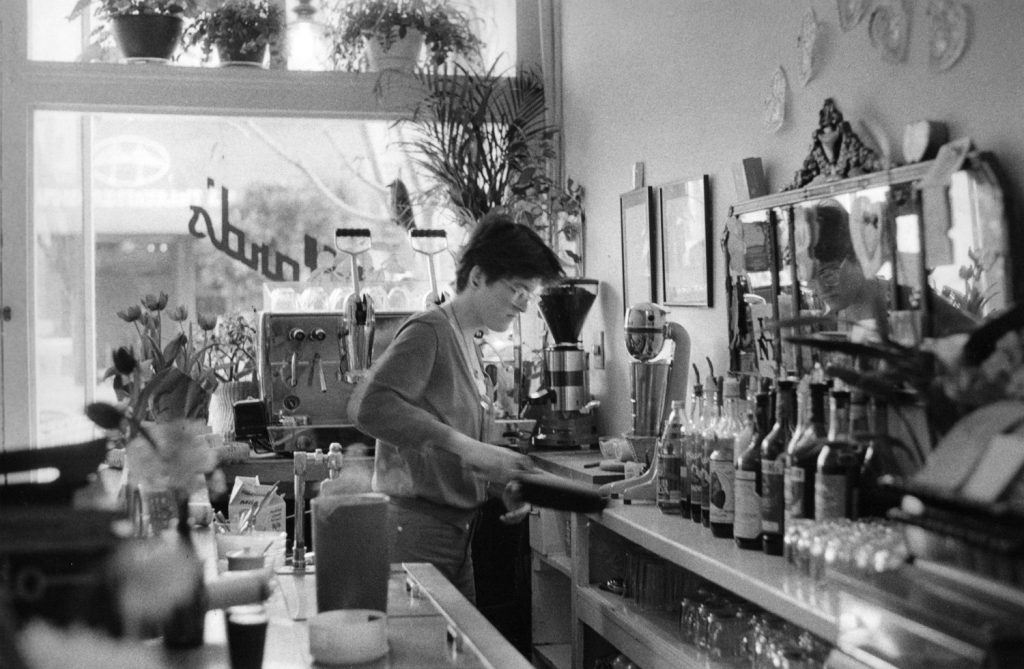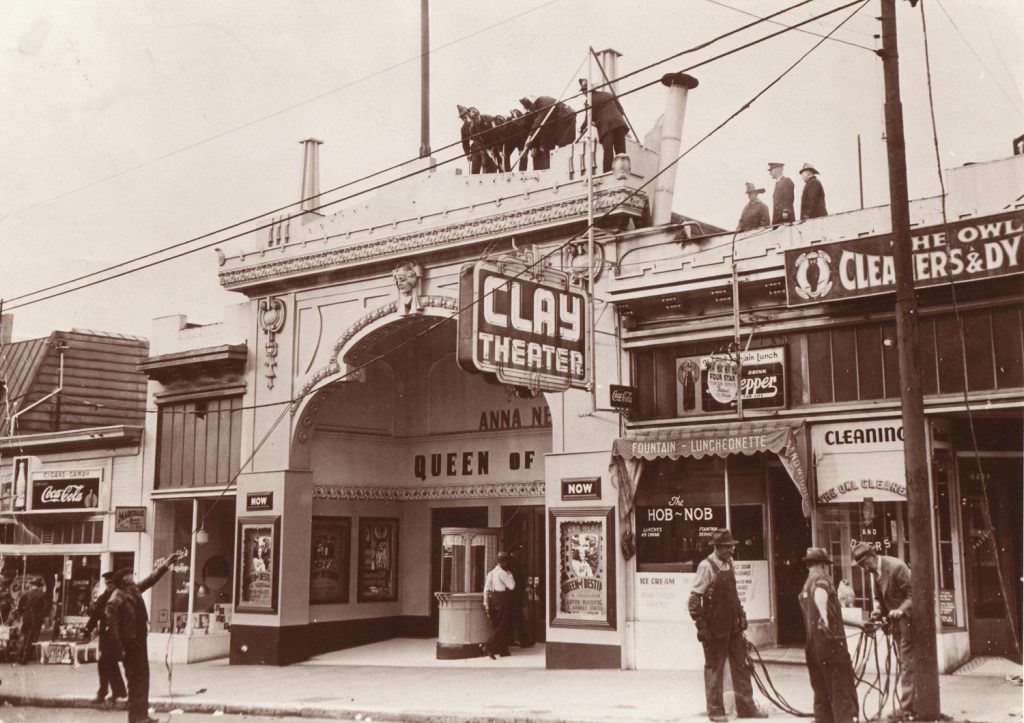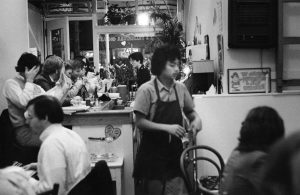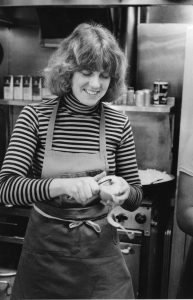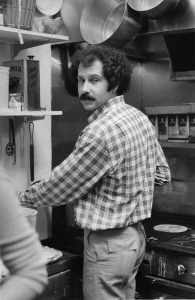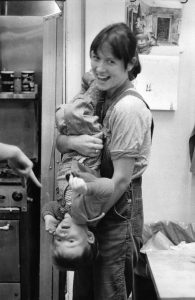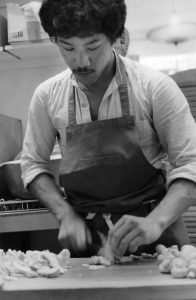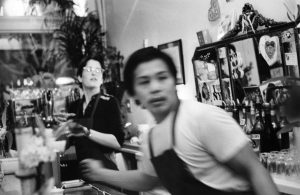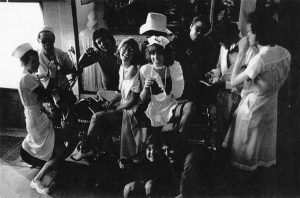LOCAL HISTORY | THOMAS REYNOLDS
Helen Brackley and Craig Silvestri were just another young neighborhood couple with dreams of starting their own restaurant.
“We both loved to cook,” says Silvestri. “So we just decided we’d open a little place with a limited menu and do crepes.”
But first they had to find a good location. It was a more innocent time — San Francisco in the mid-1970s — so they started sending out letters to different cafes and restaurants asking if the owners might be interested in selling or retiring.
“We looked all over,” Silvestri says, “in different neighborhoods and even up in St. Helena.”
They lived a few doors up Clay Street from Fillmore. One of the people who responded to their letters owned the Hob Nob cafe at 2197 Fillmore, a tiny sliver of a place that for decades was next door to the Clay Theater, which they could see from their front steps.
“The Hob Nob was pretty funky,” Silvestri remembers. “It had been there a long time and was not a very active place.”
So they made a deal to take over the cafe, enlisted the help of a carpenter friend, and soon became a part of the revival of upper Fillmore Street.
“We were pioneers,” says Brackley. “There wasn’t much here at the time.”
“We’d watched the Clay make a number of efforts to be a successful theater,” says Silvestri. “Then Mel Novikoff bought it — he was the original Renaissance man on the street, and the progenitor of Fillmore’s rebirth. It looked like an amazing opportunity to be part of that.”
They had a space and a concept, and within a couple of months they were almost ready to open. But they still needed a name.
“We were constantly thinking of names and shooting them down,” says Brackley. “We were killing ourselves.”
“We were down to the wire,” says Silvestri. “We had to submit the name for the business license and liquor license.”
“So finally,” says Brackley, “we thought: ‘It’s on Fillmore. Let’s just call it Millard’s.’ ”
By the spring of 1976 Millard’s was open for business, and it was almost immediately a hit. There were only 24 seats — one tiny table in the window, six seats at the counter and six tight tables in the back.
“The cafe was full all the time,” says Brackley. “People were there not just every day, but several times a day. It seemed like they never left.”
Film fans stopped by on their way to the Clay. Musicians were in and out of Carlos Santana’s studio on the other side of the Clay. There were physicians and nurses from the hospital just up the hill and lots of psychiatrists with offices nearby.
“We had a lot of shrinks and artists,” says Silvestri.
“And we always had a string of musicians,” adds Brackley.
There were plaques for the regulars on the back of their favorite stools.
“It felt like a hub,” says Silvestri, “and an amazing source of friendships for us. We both cooked, and we had some colorful waitresses.”
“We had a great time,” says Brackley. “You knew everything that was going on on the street.”
Then in December 1976 budding young food critic Patty Unterman — now a neighborhood resident — gave Millard’s a glowing review in New West magazine.
“Business doubled,” says Silvestri, “and we maintained that level all the time.”
Longtime neighborhood residents still remember Millard’s as a special place — and one of the first more sophisticated places to eat on Fillmore.
“I loved the Hob Nob,” says Gary Arsham, a physician at California Pacific Medical Center. “We had a lot of lunches there — for $1.50. But Millard’s was the first on upper Fillmore to do higher-end food.”
Food writer and lifelong neighborhood resident Arthur Bloomfield remembers: “The street wasn’t very hip then.”
But Millard’s was.
“It was different,” Bloomfield says. “The place had a feeling of being a really fun, fairly gastronomically intense hangout — and there weren’t that many in those days. Crepes would have been more up-market.”
Hotelier Bernard Butcher, then and now a resident of the neighborhood, remembers taking his visiting parents to Millard’s.
“My parents were from the San Fernando Valley and the smallest restaurants they used to go to were chains with about 300 seats or more,” says Butcher. “I remember their reaction the first time we took them to Millard’s, which was like being invited into the private kitchen of people they didn’t know. It took them a while to get used to the friendly confines of Millard’s. They settled down and enjoyed the food, but I’m sure they told their friends at home what a strange culture they had encountered up north in the Fillmore District.”
Within a few years the bloom was off the rose, and Brackley and Silvestri closed in January 1980.
“There was a certain amount of burnout,” says Silvestri. “We were never struggling, but due to the limitation of size and the limited menu, there was a limit to what we could do.”
They sold Millard’s to a recent cooking school graduate and it continued for three more years, until the lease expired and the rent tripled. Silvestri went on to a successful career in Marin real estate and Brackley became a registered nurse.
But memories of Millard’s live on as a time when dining on Fillmore took a decided turn upscale — and paved the way for all that followed.
- Inside Millard’s at 2197 Fillmore
- Chef-owner Helen Brackley
- Chef-owner Craig Silvestri
Filed under: Food, Drink & Lodging, Neighborhood History




